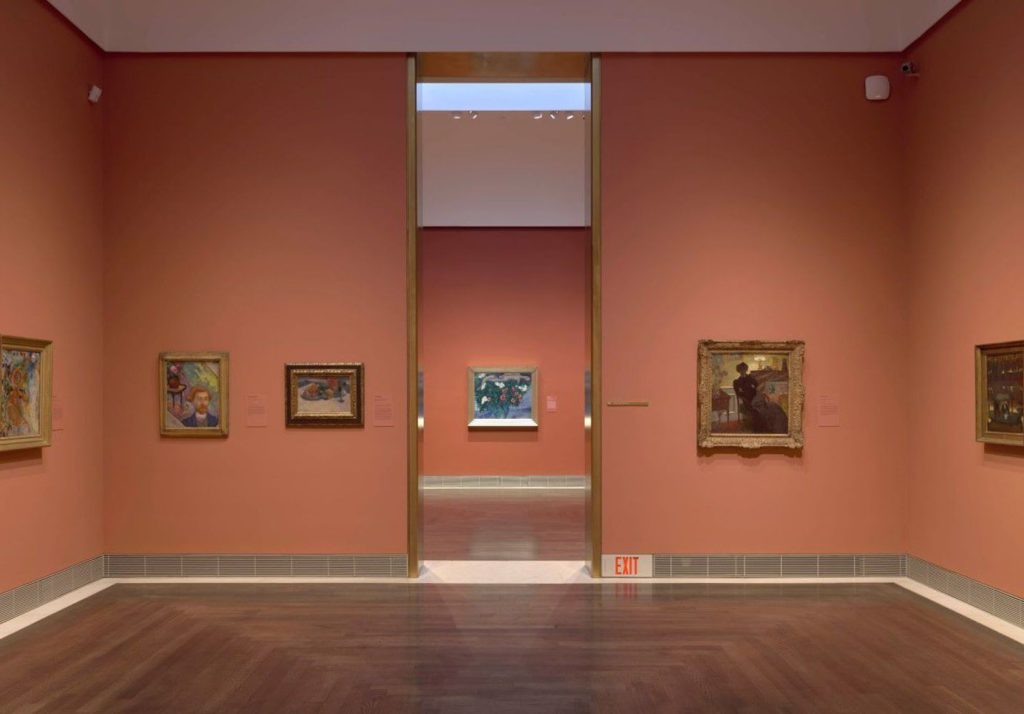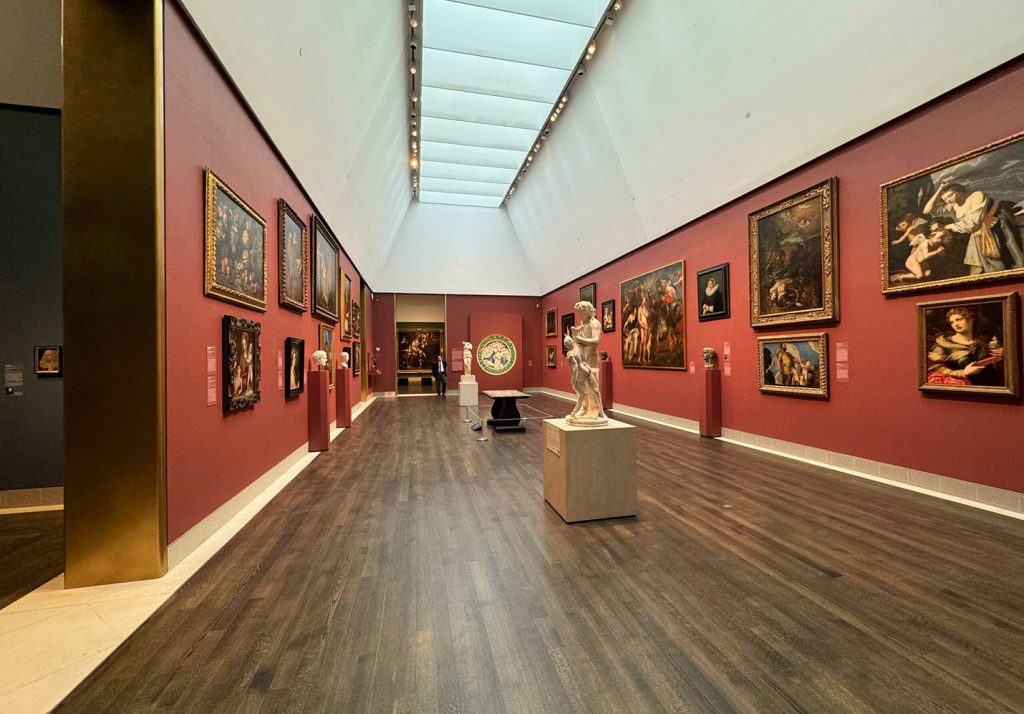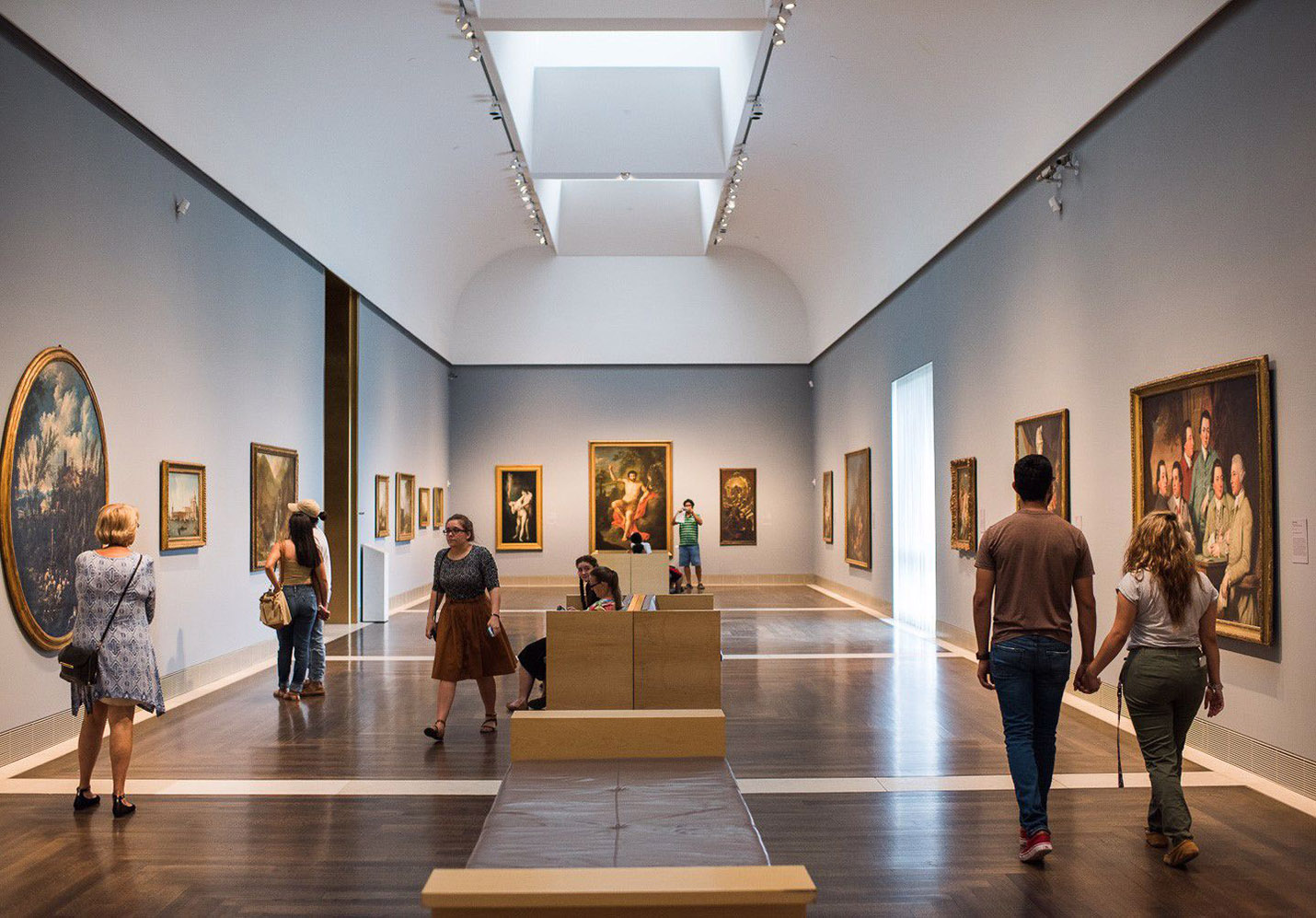From the Louvre in Paris to the Metropolitan Museum of Art in New York. Yet, every once in a while, a museum surprises me in ways I didn’t expect, and one such gem is the Museum of Fine Arts, Houston (MFAH). Nestled in the heart of Houston, this museum isn’t just a place for fine art; it’s a place for inspiration, reflection, and a deep dive into the rich history of art from around the world. With over 70,000 works of art in its vast collection, the MFAH is not only one of the largest museums in the United States, but it is also an undeniable cultural treasure that I can’t recommend highly enough.
The Location: A Cultural Oasis in the Heart of Houston
The Museum of Fine Arts, Houston, is located at 1001 Bissonnet St, Houston, TX 77005, in the Museum District of the city. This prime location puts you right in the heart of one of Houston’s most vibrant neighborhoods. The museum itself occupies an entire city block, with grand, neoclassical architecture that beckons you inside to discover its treasures.
As I entered the museum for the first time, I was taken aback by the beautiful, marble-lined atrium, bathed in natural light, making the entire space feel warm and welcoming. The architecture here plays an important role in the experience—the classical columns, the sleek glass walls, and the sweeping staircases guide you through the museum like an artwork in itself.
To get there, you can take the METRO Bus Route 8 or 50, both of which stop nearby. If you’re coming from downtown, a quick drive or a ride-share service will get you there in under 15 minutes. Parking is available for a small fee in the museum’s garage, and there are plenty of signs guiding you to the entrance once you arrive.
Ticket Information and Discounts:
As of my last visit, the MFAH offers various ticketing options:
• General Admission: Adults $19, Seniors (65+) $16, Students $13, Children (12 and under) Free
• Membership: If you’re a frequent museum-goer, I highly recommend considering a membership. The membership prices start at $75 per year for individuals, and it grants you unlimited access to the permanent collections and select special exhibitions. Not to mention, members receive discounts on events, programs, and even at the museum shop and cafe.
During special exhibitions, ticket prices may vary, but often the museum offers discounts or packages that combine admission to multiple exhibits. For instance, I recently visited during an exhibition on Impressionist art, and they offered a multi-exhibition pass for just $30, which granted me access to the special show as well as the permanent collection.
The museum is open Tuesday through Sunday, 10:00 AM – 5:00 PM, and it is closed on Mondays. Be sure to check the website for any special holiday hours or event closures. Tickets can be purchased online through the MFAH website, where I always book my tickets in advance to avoid the lines. There are also platforms like Eventbrite where you can find tickets for special events or exhibitions.
The Four Must-See Galleries in MFAH
I’ve had the pleasure of experiencing the MFAH many times over the years, and each time I’m struck by something new. The museum is divided into several distinct galleries, each showcasing different periods and styles of art. After my countless visits, I’ve compiled my top four must-see areas within the museum, each of which features unique and breathtaking works that have left me in awe.
- European Art Collection: A Timeless Journey Through the Ages
The European Art collection at the MFAH is one of the largest and most diverse in the United States, spanning from the early Renaissance to the 20th century. I have spent hours just wandering through the various rooms, discovering masterpieces that continue to inspire generations of artists. If you are a fan of the great European painters, then this gallery is an absolute must.
My Favorite Works in the European Collection:
• “The Death of Sardanapalus” by Eugène Delacroix
When I first saw this painting, I was immediately struck by its vivid colors and intense emotion. This masterpiece from the French Romantic period depicts the last moments of the Assyrian king, Sardanapalus, and it is drenched in the chaos of his demise. The swirling reds and blacks, combined with the dramatic composition, felt like a pulse of raw emotion. Delacroix’s use of light and shadow here is mesmerizing, almost as if the painting is alive.
• “The Blue Boy” by Thomas Gainsborough
This iconic portrait is one of the highlights of the European collection. The life-like quality of the subject, a young boy dressed in striking blue attire, is truly captivating. Gainsborough’s talent for capturing detail in the boy’s face and the fabric of his clothing makes it seem as though he could step out of the canvas at any moment. This portrait is a great example of the elegance and realism of 18th-century British portraiture.
• “The Old Guitarist” by Pablo Picasso
A piece from Picasso’s Blue Period, “The Old Guitarist” encapsulates the melancholy and introspection of the era. The figure of an elderly man with his guitar is painted in various shades of blue, evoking a sense of solitude and despair. It’s a beautiful yet sorrowful reminder of the human condition, and the way Picasso captures emotion with minimal color is something that has stayed with me long after my visit.
Three Works I Recommend:
• “The Girl with a Pearl Earring” (Johannes Vermeer): A simple yet captivating portrait that has become an icon of art history. Vermeer’s use of light is extraordinary.
• “The Hay Wain” (John Constable): A stunning landscape that embodies the serenity of the English countryside.
• “The Arnolfini Portrait” (Jan van Eyck): A detailed masterpiece that highlights van Eyck’s meticulous attention to texture and symbolism.

- American Art: The Soul of the United States
As an American, the American Art collection resonates deeply with me. It reflects the diverse history and culture of the United States, from early colonial days to the modern era. The MFAH’s collection of American art is one of the largest and most important in the country, and it offers a fascinating look at how American artists have captured the changing landscape of their country.
My Favorite Works in the American Collection:
• “The Gross Clinic” by Thomas Eakins
This painting, depicting a surgical operation in a 19th-century operating room, is as raw and captivating as it is horrifying. The detail in the figures is incredible, and the stark contrast between the doctor and his patients reveals Eakins’ masterful ability to capture the human form. It was unlike anything I had ever seen before—graphic, intense, and thought-provoking.
• “Washington Crossing the Delaware” by Emanuel Leutze
This is one of those paintings that never fails to impress. The grandeur and drama of the scene, which portrays George Washington’s famous crossing of the Delaware River during the Revolutionary War, are larger-than-life. The powerful expressions of the men on the boat and the stormy sky add to the sense of heroism and triumph in this iconic piece of American history.
• “Christina’s World” by Andrew Wyeth
When I stood in front of this haunting painting, I couldn’t help but feel a deep sense of isolation. Christina, the subject of the painting, lies on a field, gazing toward a distant house. The vast, empty landscape around her is breathtaking, and the muted colors give the piece a feeling of quiet longing. Wyeth’s ability to evoke emotion through subtlety is unmatched.
Three Works I Recommend:
• “The Tragedy” (Childe Hassam): A painting that beautifully captures the early 20th-century American experience.
• “Self-Portrait” (Alice Neel): A striking and intimate portrayal of the artist herself.
• “The Lamentation” (John Rogers): A smaller yet deeply evocative sculpture that reflects America’s post-Civil War sentiments.
- Asian Art: The Timeless Beauty of the East
The Asian Art collection at the MFAH is a tranquil oasis, offering a glimpse into the cultures, traditions, and artistic legacies of China, Japan, Korea, and Southeast Asia. As I wandered through the galleries, I found myself captivated by the grace and beauty of the artifacts, which ranged from delicate porcelain to intricate calligraphy.
My Favorite Works in the Asian Collection:
• “The Tale of Genji” Screens
These hand-painted screens tell the story of the famous Japanese literary work, “The Tale of Genji”. The vibrant colors and detailed depictions of courtly life in ancient Japan are mesmerizing, and I couldn’t help but lose myself in the historical richness of the scenes.
• “The Three Friends of Winter” (Chinese Painting)
This serene painting, depicting pine, bamboo, and plum trees, symbolizes perseverance and resilience. The intricate brushwork and delicate portrayal of nature make it a timeless piece that speaks to the philosophy of Chinese art.
• “Kannon” (Japanese Sculpture)
This statue of the Buddhist goddess Kannon radiates a sense of peace and tranquility. The graceful, flowing lines of the sculpture capture the divine nature of Kannon, and it is one of the most beautiful pieces I’ve encountered in the museum.
Three Works I Recommend:
• “The Admonitions of the Instructress to the Court Ladies” (Chinese Painting): A delicate piece that speaks to the moral values and traditions of ancient China.
• “Sakyamuni Buddha” (Japanese Sculpture): An elegant and serene representation of the Buddha.
• “The Lotus Pond” (Korean Screen): A stunning example of Korean folk art, featuring vibrant colors and natural imagery.
- Modern and Contemporary Art: A Glimpse into the Future
The Modern and Contemporary Art collection at the MFAH is an exciting journey through the cutting-edge movements of the 20th and 21st centuries. From abstract expressionism to pop art and video installations, this section of the museum is a testament to the constantly evolving world of art.
My Favorite Works in the Modern and Contemporary Collection:
• “No. 61 (Rust and Blue)” by Mark Rothko
This massive abstract painting is filled with color and emotion, yet its simplicity is what struck me the most. The vast fields of red, orange, and blue seem to pulse with energy, pulling me into the depths of Rothko’s emotional landscape.
• “Campbell’s Soup Cans” by Andy Warhol
No trip to a modern art museum would be complete without seeing Warhol’s iconic Campbell’s Soup Cans. This piece, with its mass-produced aesthetic and bold, repetitive imagery, felt both oddly comforting and disconcerting. It’s a perfect example of how Warhol challenged the concept of art itself.
• “Untitled” (Jean-Michel Basquiat)
Basquiat’s work is raw, energetic, and full of layered meaning. The chaotic brushstrokes and graffiti-like symbols evoke a sense of rebellion and defiance, yet there’s an underlying intelligence in his commentary on race, identity, and society.
Three Works I Recommend:
• “Blue Poles” (Jackson Pollock): A bold, energetic piece that epitomizes Abstract Expressionism.
• “The Physical Impossibility of Death in the Mind of Someone Living” (Damien Hirst): A shocking yet thought-provoking installation with a preserved shark in formaldehyde.
• “Girl with Balloon” (Banksy): A striking piece of street art that blends political and emotional statements.

The Museum of Fine Arts, Houston is, without a doubt, one of the most exciting, diverse, and awe-inspiring museums I’ve ever visited. Each gallery offers a unique window into the culture, history, and creativity of different parts of the world. From the iconic works of European masters to the contemplative beauty of Asian art, the MFAH offers an experience that both educates and inspires. It’s a place where I can lose myself for hours, discovering new favorites, learning something new, and gaining fresh perspectives on the world of art. Whether you’re a first-time visitor or a returning art lover, the MFAH is sure to leave you with lasting memories and a deeper appreciation for the timeless beauty of art.



